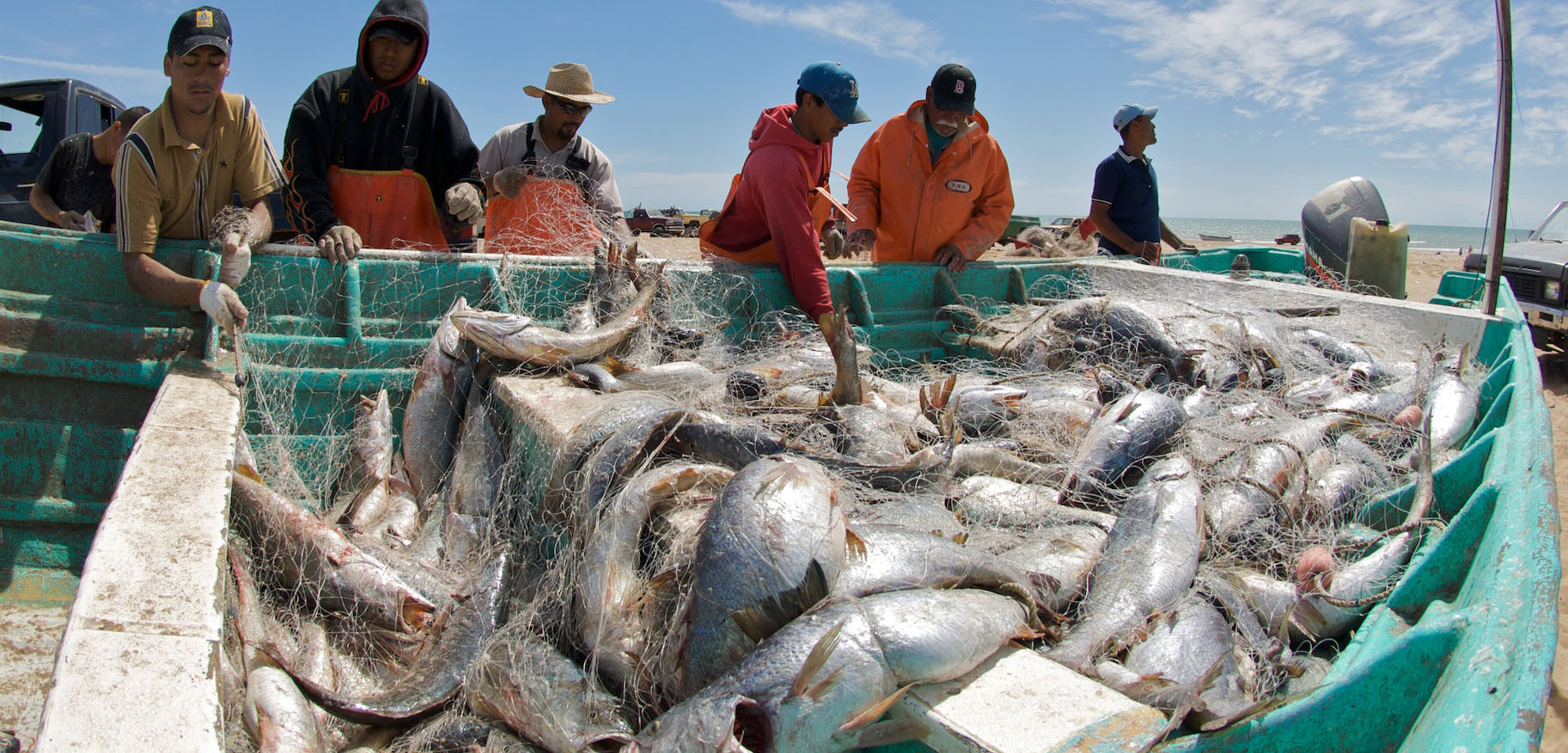Counting Fish by Their Calls
Fish are noisy, and researchers are putting those sounds to work.
Article body copy
During the rising spring tides from February to June, the usually quiet Colorado River Delta is overcome by a low-pitched buzz. The drone pervades the estuary, and hundreds of fishermen, hunkered down in small boats known as pangas, follow the sound. As the fishermen make their approach, the buzz turns to a roar.
In the water below, more than a million Gulf corvinas churn the water in a spawning frenzy. But the noise is more than just the sound of fish thrashing—it’s the mating chorus of hundreds of thousands of males.
Brrrrppp brrrrppp brrrrppp brrrrppp. Audio by Timothy Rowell
These love calls are thought to bring the fish together. They also draw the attention of fishermen and their nets. But in a new study, led by Scripps Institution of Oceanography marine biology doctoral candidate Timothy Rowell, the call of the fish can play another role: as data for a census.
Though various species of corvinas can be found in temperate and tropical habitats around the world, the Gulf corvina lives in only one place, the Gulf of California. The meter-long fish breeds at specific times and places in the Colorado River Delta. The vulnerable species is presumed to be under threat from overfishing, but a dearth of reliable data makes it difficult to say for certain.
“The boats can take out 1.5 million [Gulf] corvinas over 20 days of fishing,” says Rowell. “It’s problematic if not done sustainably.” Government policies protecting other fish species in the area, and low prices for corvina have pushed fishermen to net ever more.
What’s more, the corvinas appear to be shrinking—possibly due to poaching.* Many corvinas are caught at half their full size, says Brad Erisman, a fisheries ecologist at the University of Texas at Austin who worked on the new study.
Yet no one can confirm if fishing pressure is hurting Gulf corvina numbers. That’s where the male corvinas’ vocalizations come in.
Rowell and his team figured out that by recording corvinas’ calls, they could devise a cheap, repeatable, and reliable way to count the fish. At the same time the scientists recorded the calls, they made precise, independent surveys of fish numbers with sonar technology. They then matched both data sets to determine a relationship between fish sounds and population numbers. With this relationship in hand, they could then start calculating the number of fish in the area from fish sound recordings alone.
Rowell’s goal is to train Mexican fisheries scientists to use the technique, and if they get funds and the support of the Mexican government, deploy long-term listening stations to monitor corvina numbers.
Fish are surprisingly chatty creatures, and Erisman says the same method could be used for other fish, too. “Every time we look for fish sounds, we find them,” he says. “We are just starting to scratch the surface of understanding fish sounds.”
Correction: The story was updated to better reflect Erisman’s point that corvinas are shrinking likely because of illegal poaching, not overfishing.

